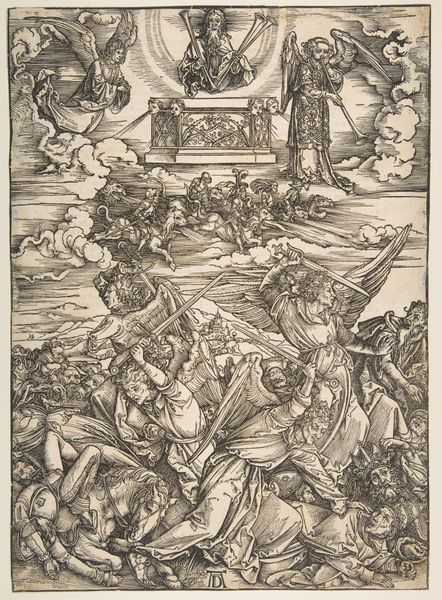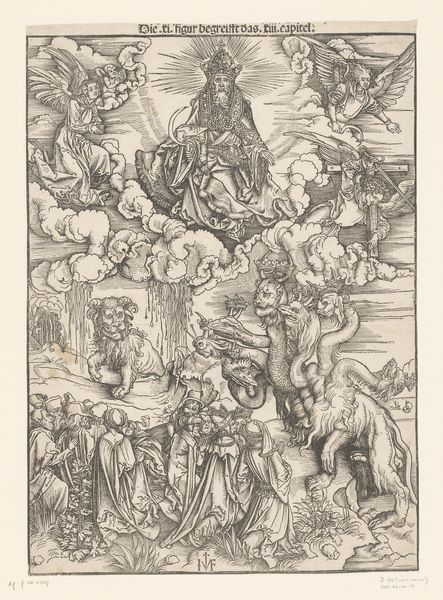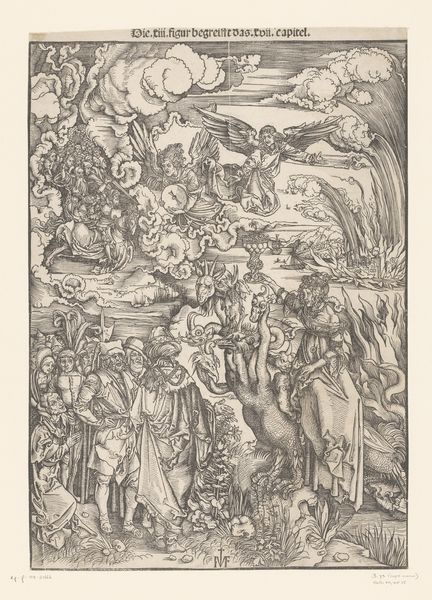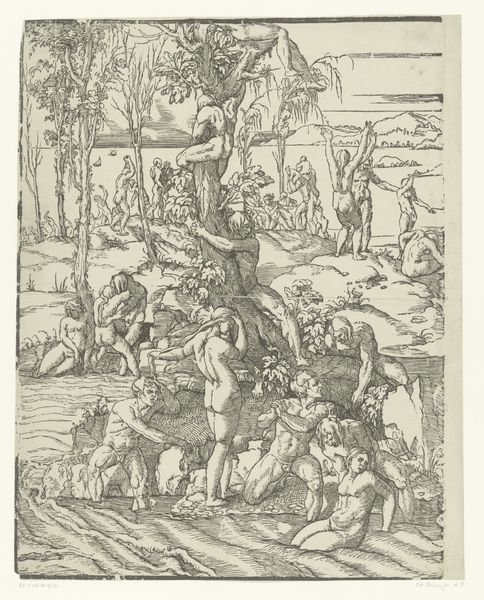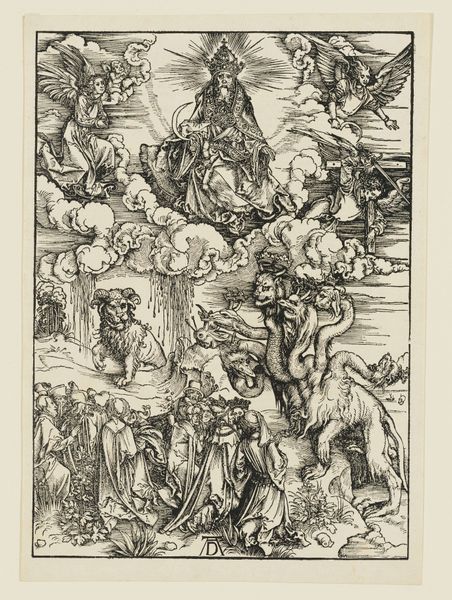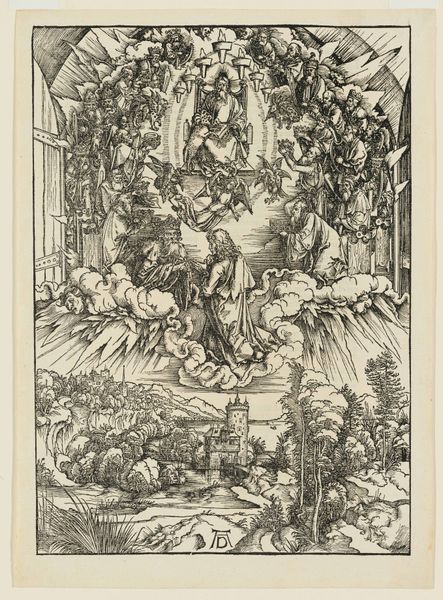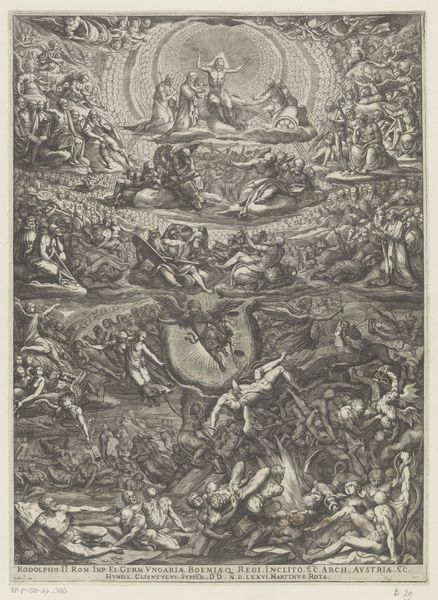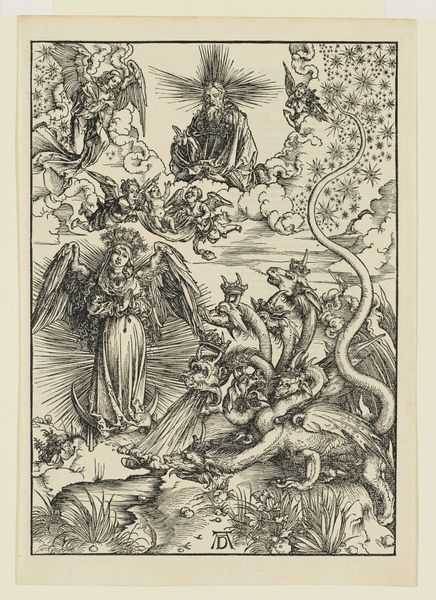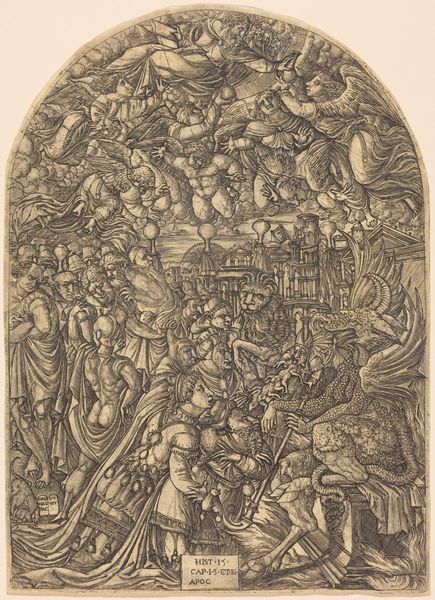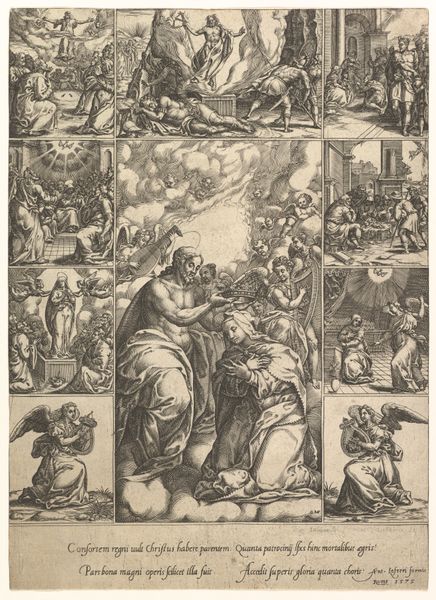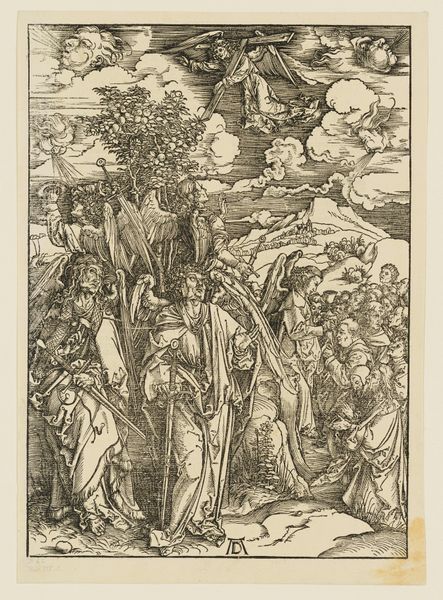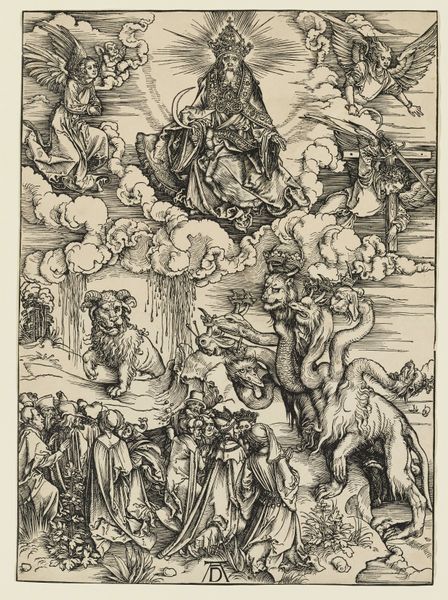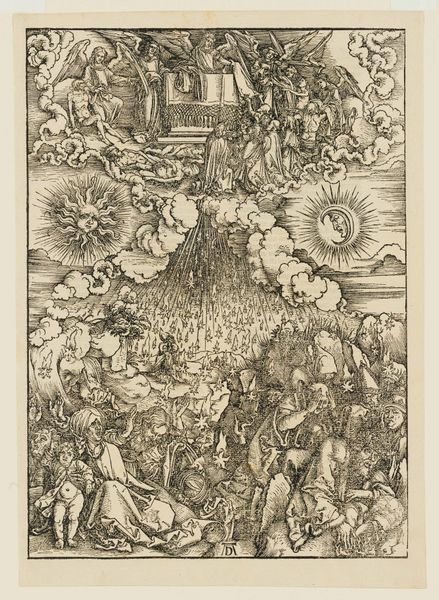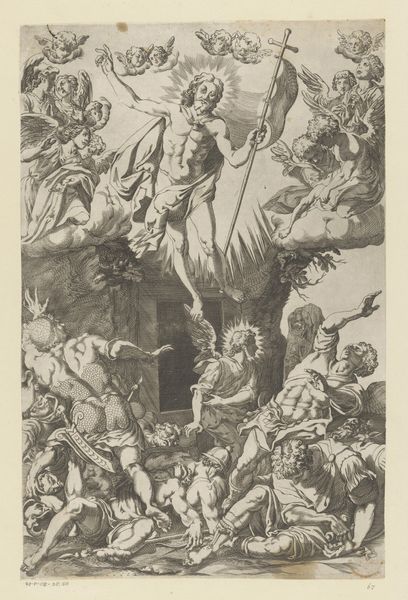
Dimensions: 15 1/2 x 11 3/16 in. (39.37 x 28.42 cm) (image)
Copyright: Public Domain
Curator: This is "The Four Avenging Angels" by Albrecht Dürer, likely completed between 1498 and 1511. It's currently held in the collection of the Minneapolis Institute of Art and realized as a woodcut print. Editor: My first impression is the sheer intensity of the scene. The composition feels chaotic, but in a controlled way, all rendered in striking black and white. Curator: Dürer masterfully uses line to create texture and drama. The density of the lines in the lower half contributes to the overwhelming sense of apocalypse. Consider how the angels, depicted with dynamic wings and resolute faces, wield their swords. The artist’s signature bold, graphic style intensifies the overall effect. Editor: Yes, and focusing on Dürer's medium, woodcut—think of the labor involved! Each line had to be painstakingly carved into the block. The physical act of removing material is almost like a metaphor for destruction itself, mirroring the subject matter. You see the artisan's hands, literally shaping a vision of the end. Curator: I agree. The Northern Renaissance obsession with detail meets German Expressionism's emotional intensity here. Dürer wasn't simply illustrating a scene from the Book of Revelation; he was imbuing it with a psychological weight that resonates with the anxieties of his time. The formal elements—the perspective, the figuration—all serve to amplify this dread. Editor: Beyond the stylistic considerations, woodcut printing was crucial for distributing ideas, making potent images such as this accessible and helping spread apocalyptic fervor among common folks during a period rife with religious upheaval. One readily accessible copy to an artisan family would certainly impact popular opinions of church figureheads or rulers in general. Curator: Ultimately, Dürer gives form to intangible anxieties about divine judgment, creating a lasting visual testament to the power of art as social commentary. Editor: And in its own way, through craft, making this nightmare strikingly palpable, forever inscribed into material history through a skilled hand and the cultural fears he materialized so vividly.
Comments
No comments
Be the first to comment and join the conversation on the ultimate creative platform.
